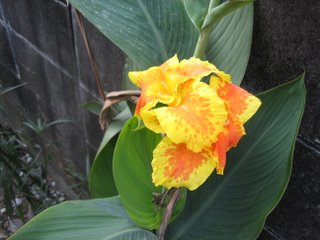Shinyodo, 15 minutes south of Ginkakuji on foot







Shisendo, in northern Sakyo-ku, 15 min from my house on bike




Started as an online journal for my time in Japan, but has turned into a travel journal covering my trips around Japan and to India/Sikkim and Bhutan

























 Throughout the year, pilgrims from all over Japan trek (usually with the help of a bus) to the eighty-eight Shinto shrines that are spread around Shikoku, with perhaps the most famous stationed in Kotohira. After a nights stay in a riverside ryokan, and a climb halfway up the 1500-odd stairs, I met my two fellow (although usually separated) travellers, who had arrived late from Takamatsu.
Throughout the year, pilgrims from all over Japan trek (usually with the help of a bus) to the eighty-eight Shinto shrines that are spread around Shikoku, with perhaps the most famous stationed in Kotohira. After a nights stay in a riverside ryokan, and a climb halfway up the 1500-odd stairs, I met my two fellow (although usually separated) travellers, who had arrived late from Takamatsu.  Countless toris and shrines lined the path to the top. Finally we reached the final shrine, which stood rather precariously on stilts which jutted from a rock face, surrounded by trees. We leisurely took lunch there where I unexpectedly, but excitedly, recieved a call from home. Happy Birthday Mom!
Countless toris and shrines lined the path to the top. Finally we reached the final shrine, which stood rather precariously on stilts which jutted from a rock face, surrounded by trees. We leisurely took lunch there where I unexpectedly, but excitedly, recieved a call from home. Happy Birthday Mom!



 I next found myself in Katsurahama, where a famous statue of Sakamoto Ryoma, the local hero who played a role in instigating the Meiji Restoration, looks over the sea. I spent some hours reading and exploring the surrounding port. I met with my two friends who were travelling the same area, and we started heading west along the coast.
I next found myself in Katsurahama, where a famous statue of Sakamoto Ryoma, the local hero who played a role in instigating the Meiji Restoration, looks over the sea. I spent some hours reading and exploring the surrounding port. I met with my two friends who were travelling the same area, and we started heading west along the coast.






 Next, we found ourselves in Ashizuri, which is the southernmost point in Shikoku. We luckily ran into a JET who was stationed in the nearby town of Tosa-Shimizu. She was nice enough to point us to the hostel which lies on the grounds of a Shinto shrine. As it was getting dark, we quickly made our way to the ocean shore and lighthouse. The tori (above) seemingly leads straight into the rock that juts out into the ocean, but if you shimmy up the rock face a small shrine comes into view. Unfortunately, I didn't bring my camera. But that rock face turns out to be the roof of one of the biggest ocean "caves" in Japan.
Next, we found ourselves in Ashizuri, which is the southernmost point in Shikoku. We luckily ran into a JET who was stationed in the nearby town of Tosa-Shimizu. She was nice enough to point us to the hostel which lies on the grounds of a Shinto shrine. As it was getting dark, we quickly made our way to the ocean shore and lighthouse. The tori (above) seemingly leads straight into the rock that juts out into the ocean, but if you shimmy up the rock face a small shrine comes into view. Unfortunately, I didn't bring my camera. But that rock face turns out to be the roof of one of the biggest ocean "caves" in Japan.

